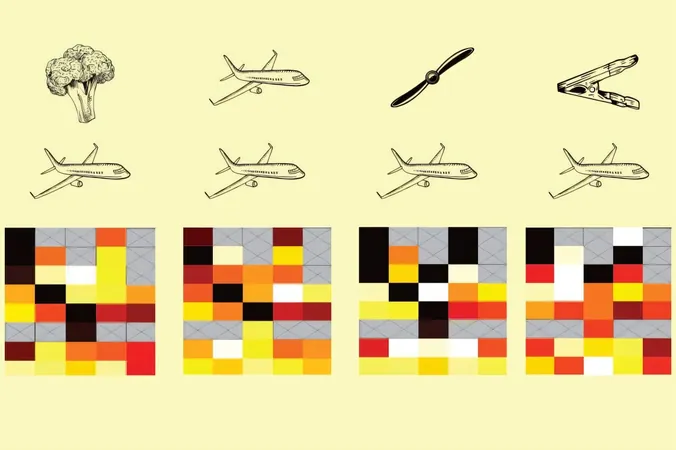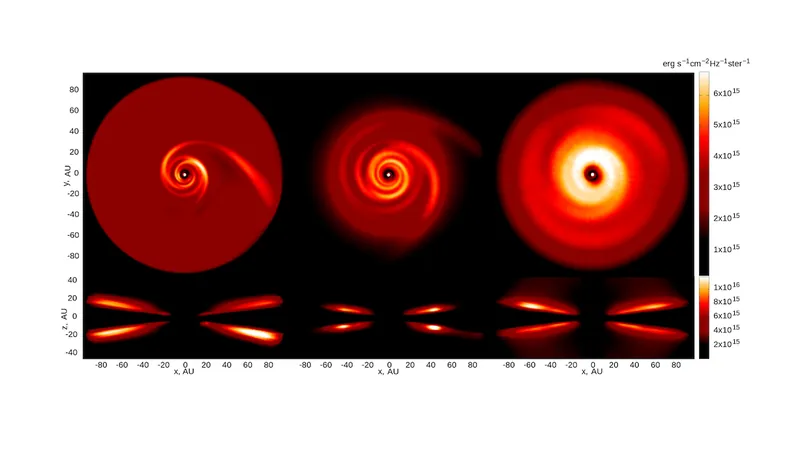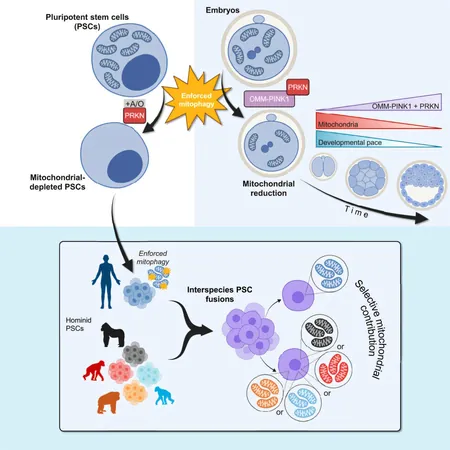
Unlocking the Brain's Secrets: How Experience Shapes Object Recognition
2025-05-02
Author: Li
The Incredible Journey of Visual Perception
From the very first blink, our brains kickstart an astonishing process that helps us make sense of the world around us. This intricate dance occurs in the visual cortex, allowing us to piece together scattered elements into familiar objects.
A New Understanding of Visual Processing
Traditionally, scientists believed that different neurons in the ventral visual pathway were programmed to handle specific types of information, responding only to increasingly complex stimuli as they moved up hierarchy levels. However, a groundbreaking study from Charles D. Gilbert's lab at Rockefeller University reveals that feedback mechanisms in this pathway are far more influential than previously thought.
"Feedback connections, often overlooked, play a crucial role by conveying 'top-down' information derived from our previous encounters with objects," explains Gilbert. This means that the brain’s ability to recognize objects isn't as rigid as once believed; instead, it’s dynamic and influenced by past experiences.
Innovative Research with Macaques
For several years, Gilbert’s team studied macaques trained in object recognition tasks using a variety of images, from fruits to tools. By using fMRI, they monitored brain activity in response to these stimuli. The researchers even implanted electrodes to record how individual neurons reacted to full or partial images.
Neurons: Adaptive Processors of Information
Through meticulous experiments, the researchers uncovered an exciting revelation: individual neurons can adapt their responses on the fly! Whether presented with a familiar object or a different cue altogether, these neurons proved to be highly flexible, stepping up their game based on the task at hand. "These neurons are not limited to simple stimuli; they can process complex visual information, reflecting a much more dynamic nature of object recognition than we understood before," Gilbert shares.
Implications for Understanding the Brain
This pioneering research challenges the longstanding view of how the brain processes visual information. Gilbert posits that neurons are not fixed in their roles but can adjust, transforming their functions according to various sensory experiences. The findings underscore the importance of feedback connections, which provide essential context for understanding our environment.
Beyond Object Recognition: Future Research Directions
The implications of this research extend beyond mere visual perception. Gilbert suggests that these 'top-down' interactions are integral to various brain functions, including motor control and cognitive abilities. His team is now exploring the neural basis for object recognition in animal models of autism. By examining perceptual differences and the underlying cortical circuits, they aim to unravel the complexities of brain disorders.
"Our work seeks to identify variations in perception that could shed light on the neural workings behind autism," Gilbert concludes. With ongoing advancements in neuroimaging technology, the journey to understand the brain's capabilities and limitations is only just beginning.



 Brasil (PT)
Brasil (PT)
 Canada (EN)
Canada (EN)
 Chile (ES)
Chile (ES)
 Česko (CS)
Česko (CS)
 대한민국 (KO)
대한민국 (KO)
 España (ES)
España (ES)
 France (FR)
France (FR)
 Hong Kong (EN)
Hong Kong (EN)
 Italia (IT)
Italia (IT)
 日本 (JA)
日本 (JA)
 Magyarország (HU)
Magyarország (HU)
 Norge (NO)
Norge (NO)
 Polska (PL)
Polska (PL)
 Schweiz (DE)
Schweiz (DE)
 Singapore (EN)
Singapore (EN)
 Sverige (SV)
Sverige (SV)
 Suomi (FI)
Suomi (FI)
 Türkiye (TR)
Türkiye (TR)
 الإمارات العربية المتحدة (AR)
الإمارات العربية المتحدة (AR)